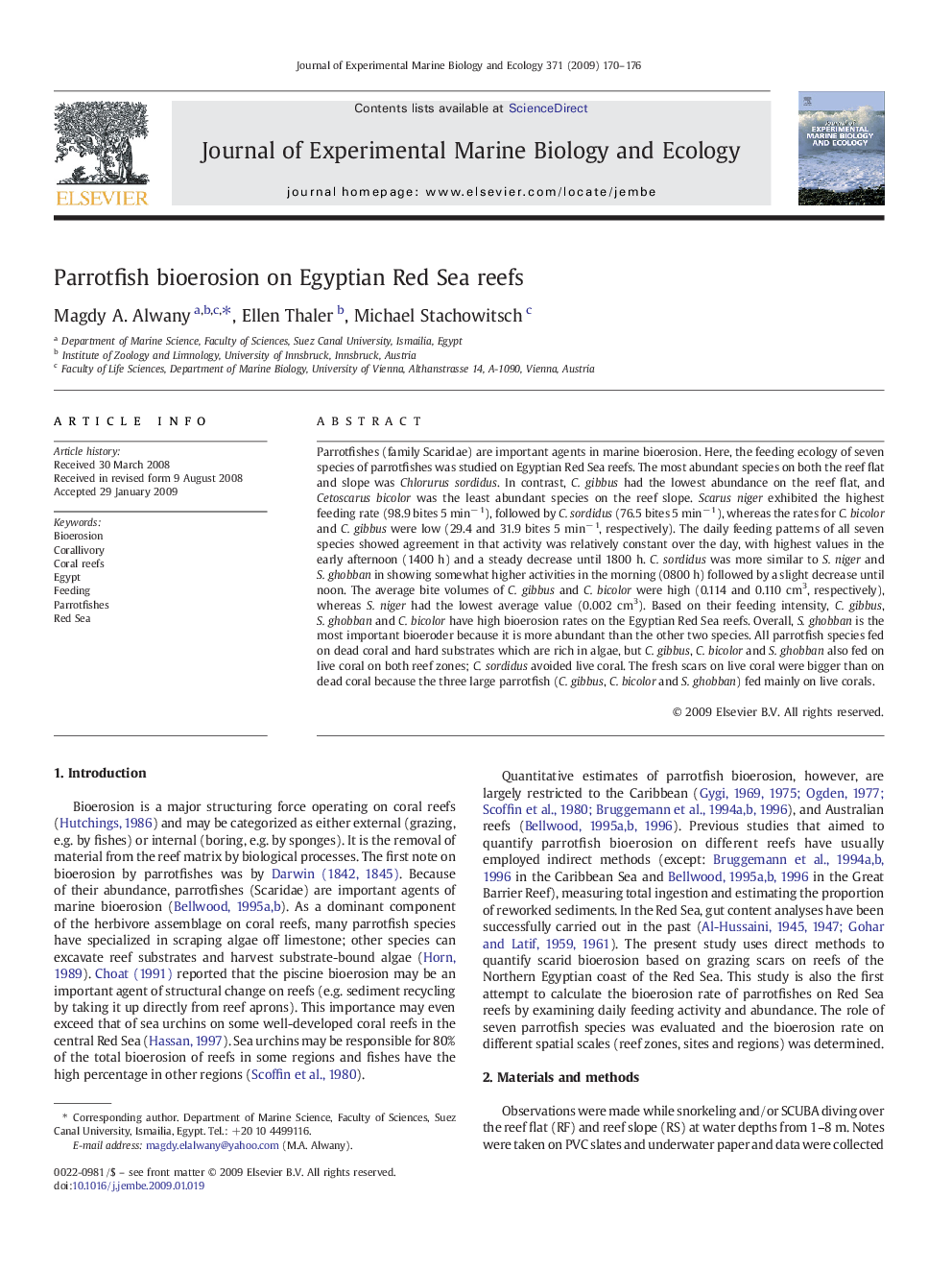| کد مقاله | کد نشریه | سال انتشار | مقاله انگلیسی | نسخه تمام متن |
|---|---|---|---|---|
| 4396906 | 1305851 | 2009 | 7 صفحه PDF | دانلود رایگان |

Parrotfishes (family Scaridae) are important agents in marine bioerosion. Here, the feeding ecology of seven species of parrotfishes was studied on Egyptian Red Sea reefs. The most abundant species on both the reef flat and slope was Chlorurus sordidus. In contrast, C. gibbus had the lowest abundance on the reef flat, and Cetoscarus bicolor was the least abundant species on the reef slope. Scarus niger exhibited the highest feeding rate (98.9 bites 5 min− 1), followed by C. sordidus (76.5 bites 5 min− 1), whereas the rates for C. bicolor and C. gibbus were low (29.4 and 31.9 bites 5 min− 1, respectively). The daily feeding patterns of all seven species showed agreement in that activity was relatively constant over the day, with highest values in the early afternoon (1400 h) and a steady decrease until 1800 h. C. sordidus was more similar to S. niger and S. ghobban in showing somewhat higher activities in the morning (0800 h) followed by a slight decrease until noon. The average bite volumes of C. gibbus and C. bicolor were high (0.114 and 0.110 cm3, respectively), whereas S. niger had the lowest average value (0.002 cm3). Based on their feeding intensity, C. gibbus, S. ghobban and C. bicolor have high bioerosion rates on the Egyptian Red Sea reefs. Overall, S. ghobban is the most important bioeroder because it is more abundant than the other two species. All parrotfish species fed on dead coral and hard substrates which are rich in algae, but C. gibbus, C. bicolor and S. ghobban also fed on live coral on both reef zones; C. sordidus avoided live coral. The fresh scars on live coral were bigger than on dead coral because the three large parrotfish (C. gibbus, C. bicolor and S. ghobban) fed mainly on live corals.
Journal: Journal of Experimental Marine Biology and Ecology - Volume 371, Issue 2, 15 April 2009, Pages 170–176